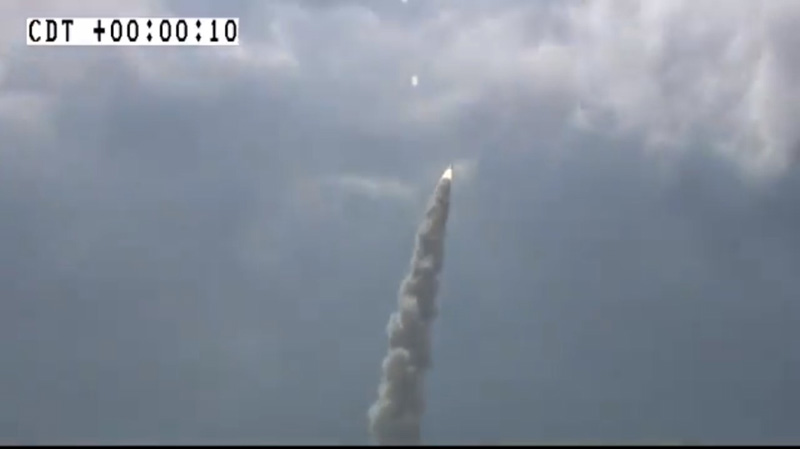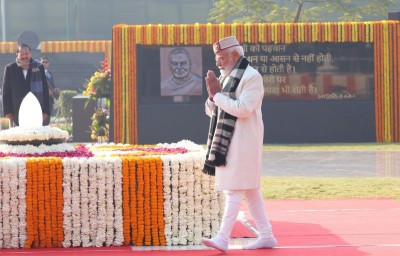 Hypersonic Vehicle
Hypersonic Vehicle
India successfully tests hypersonic vehicle
New Delhi/IBNS: Defence Minister Rajnath Singh on Monday congratulated the Defence Research and Development Organisation (DRDO) on the successful launch of indigenously developed hypersonic technology demonstrator vehicle (HSTDV).
Defence Research and Development Organisation (DRDO) has successfully demonstrated the hypersonic air-breathing scramjet technology with the flight test of Hypersonic Technology Demonstration Vehicle (HSTDV) at 1103 hours from Dr APJ Abdul Kalam Launch Complex at Wheeler Island, off the coast of Odisha today, read a government statement.
The hypersonic cruise vehicle was launched using a proven solid rocket motor, which took it to an altitude of 30 kilometres (km), where the aerodynamic heat shields were separated at hypersonic Mach number.
The cruise vehicle separated from the launch vehicle and the air intake opened as planned.
"The hypersonic combustion sustained and the cruise vehicle continued on its desired flight path at a velocity of six times the speed of sound i.e., nearly 02 km/second for more than 20 seconds. The critical events like fuel injection and auto ignition of scramjet demonstrated technological maturity. The scramjet engine performed in a text book manner," read the statement.
The parameters of launch and cruise vehicle, including scramjet engine was monitored by multiple tracking radars, electro-optical systems and Telemetry Stations.
The scramjet engine worked at high dynamic pressure and at very high temperature. A Ship was also deployed in the Bay of Bengal to monitor the performance during the cruise phase of hypersonic vehicle. All the performance parameters have indicated a resounding success of the mission.
With this successful demonstration, many critical technologies such as aerodynamic configuration for hypersonic manoeuvers, use of scramjet propulsion for ignition and sustained combustion at hypersonic flow, thermo-structural characterisation of high temperature materials, separation mechanism at hypersonic velocities etc. were proven.
The Defence Minister, congratulating the scientists said the development was a landmark achievement.
The @DRDO_India has today successfully flight tested the Hypersonic Technology Demontrator Vehicle using the indigenously developed scramjet propulsion system. With this success, all critical technologies are now established to progress to the next phase.
— Rajnath Singh (@rajnathsingh) September 7, 2020
With this India has attained the capabilities that will enable the development of next-generation hypersonic vehicles partnering with the domestic defence industry.
Successful flight test of Hypersonic Technology Demonstration Vehicle (HSTDV) from Dr. APJ Abdul Kalam Launch Complex at Wheeler Island off the cost of Odisha today. pic.twitter.com/7SstcyLQVo
— रक्षा मंत्री कार्यालय/ RMO India (@DefenceMinIndia) September 7, 2020
Reports said the HSTDV can operate with scramjets and power cruise missiles.
Support Our Journalism
We cannot do without you.. your contribution supports unbiased journalism
IBNS is not driven by any ism- not wokeism, not racism, not skewed secularism, not hyper right-wing or left liberal ideals, nor by any hardline religious beliefs or hyper nationalism. We want to serve you good old objective news, as they are. We do not judge or preach. We let people decide for themselves. We only try to present factual and well-sourced news.







